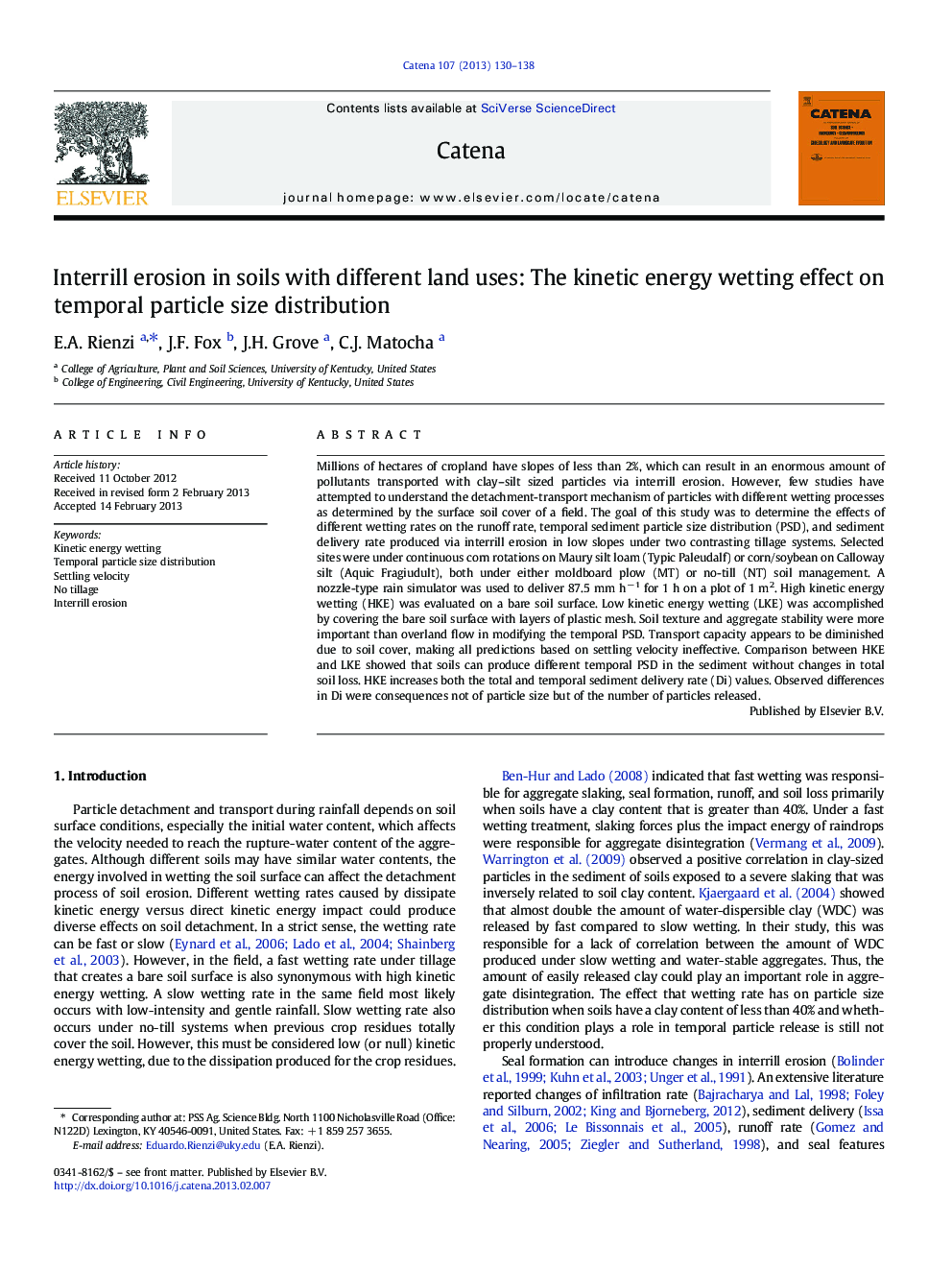| کد مقاله | کد نشریه | سال انتشار | مقاله انگلیسی | نسخه تمام متن |
|---|---|---|---|---|
| 4571647 | 1629245 | 2013 | 9 صفحه PDF | دانلود رایگان |

Millions of hectares of cropland have slopes of less than 2%, which can result in an enormous amount of pollutants transported with clay–silt sized particles via interrill erosion. However, few studies have attempted to understand the detachment-transport mechanism of particles with different wetting processes as determined by the surface soil cover of a field. The goal of this study was to determine the effects of different wetting rates on the runoff rate, temporal sediment particle size distribution (PSD), and sediment delivery rate produced via interrill erosion in low slopes under two contrasting tillage systems. Selected sites were under continuous corn rotations on Maury silt loam (Typic Paleudalf) or corn/soybean on Calloway silt (Aquic Fragiudult), both under either moldboard plow (MT) or no-till (NT) soil management. A nozzle-type rain simulator was used to deliver 87.5 mm h− 1 for 1 h on a plot of 1 m2. High kinetic energy wetting (HKE) was evaluated on a bare soil surface. Low kinetic energy wetting (LKE) was accomplished by covering the bare soil surface with layers of plastic mesh. Soil texture and aggregate stability were more important than overland flow in modifying the temporal PSD. Transport capacity appears to be diminished due to soil cover, making all predictions based on settling velocity ineffective. Comparison between HKE and LKE showed that soils can produce different temporal PSD in the sediment without changes in total soil loss. HKE increases both the total and temporal sediment delivery rate (Di) values. Observed differences in Di were consequences not of particle size but of the number of particles released.
► Temporal PSD depends on soil texture and aggregate stability.
► Wetting produces different PSDs without any differences in total soil loss.
► Temporal PSD can invalidate soil loss comparison before reaches steady state.
► How different wetting energy modifies Di in the same soil was discussed.
Journal: CATENA - Volume 107, August 2013, Pages 130–138